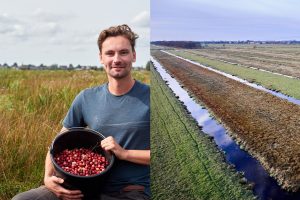“ToBRFV resistance from start to finish” is the concept that best sums up Syngenta’s philosophy in recent years when it comes to tomatoes.
On the varietal side, the company has expanded its catalogue with Legislador, a heart-shaped plum tomato with intermediate resistance (IR) to ToBRFV. It addresses the growing demand for this typology, helping growers maintain year-round supply of heart-shaped plum tomatoes.
Rafael Salinas, Syngenta’s Tomato Manager for Spain and Portugal, explains that this material is targeted for early protected cycles, with plantings in August. “We are positioning it for short autumn and spring cycles, and also developing it for longer cycles.”
The variety sets fruit well under heat, producing fruit over 100 grams while maintaining shape, quality and colour—just like its predecessor, Caniles.
A complete rootstock portfolio
In the area of rootstocks, Syngenta is also stepping up its fight against ToBRFV with a new generation of interspecific rootstocks with IR.
After two years of large-scale field testing, the company’s portfolio is beginning to show promising results. “The work is starting to pay off,” Salinas says. Syngenta expects that, in the short term, 100% of its rootstock sales will be resistant to ToBRFV, replacing legacy materials. “We’re very close—the level of demand suggests we’ll achieve that goal this year.”
The range includes four rootstocks offering varying degrees of vigour and resistance from the root system to the plant.
Among them are Kronosor (TIPR22-3083) and Fervour (TIPR23-3001)—the latter with resistance to Fusarium oxysporum f. sp. lycopersici race 3. Both offer high vigour and IR to ToBRFV. Fervour is especially useful in the face of growing Fusarium pressure.
The newer options are Armour (TIPR22-3084) and Honor (TIPR22-3085), both with medium vigour. “There are still growing conditions where no problems have occurred, and depending on the characteristics of the tomato variety, less vigour may be preferable. In those cases, Armour and Honor are ideal,” Salinas notes.
RELATED NEWS: Syngenta strengthens its leadership in late california peppers
The increasing ToBRFV pressure in recent campaigns has led to higher demand for high-vigour, resistant rootstocks. Since the virus spreads by contact and throughout the plant—including multiplication in the roots—a susceptible rootstock can allow the virus to proliferate, move upwards, and worsen symptoms. That’s why growers are increasingly adding layers of protection, opting for resistant varieties and rootstocks.
In Syngenta’s case, resistance is polygenic, ensuring greater stability. “It performs well in both high and low temperatures. Symptoms may appear under high viral pressure, but they are much less severe than in susceptible varieties.”
To combat ToBRFV, Salinas recommends using certified virus-free seed, maintaining good agricultural practices, selecting resistant varieties and rootstocks, and optimising crop management.




















